 Expert's opinion
Expert's opinion
Expert's opinion
The article is a subjective view on this topic written by writers specializing in medical writing.
It may reflect on a personal journey surrounding struggles with an illness or medical condition, involve product comparisons, diet considerations, or other health-related opinions.
Although the view is entirely that of the writer, it is based on academic experiences and scientific research they have conducted; it is fact-checked by a team of degreed medical experts, and validated by sources attached to the article.
The numbers in parenthesis (1,2,3) will take you to clickable links to related scientific papers.
How To Get Wider Hips? 8 Exercises To Gain Weight On Hips In 2024
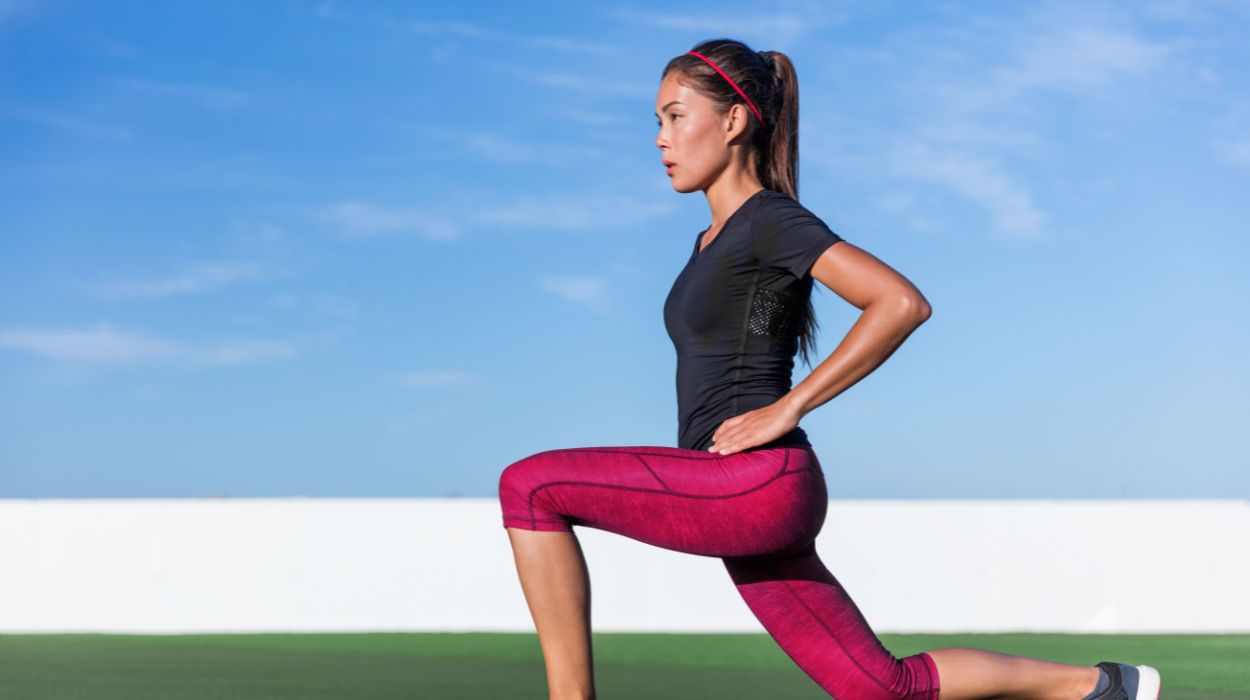
You must have been taught about puberty in elementary school, an intriguing experience. Although females and males have some common signs of puberty, distinctions exist. In females, the distinct signs include breast development, vaginal discharge, periods, and broad or wide hips.
However, some scientists have discovered that the woman’s pelvis gets wider from puberty until 30 years of age. Then at the age of 40, it starts shrinking. Various health conditions, such as a thyroid disorder or osteoporosis, may also be responsible for a shift in lose belly fat and body weight.
Losing weight in your hips can be pretty frustrating. Besides, it is possible to be discontent with your waist-to-hip ratio at any time, whether you feel you are losing weight or not. But is there a way out? Well, this piece should suffice since it will center on how to gain weight in the hips and thighs. So, it is time to dive in!
How To Gain Weight In Hips? 8 Exercises To Widen Hips
How To Get Wider Hips? Try These Exercises For Bigger Hips
Abductor Machine
A hip abductor machine helps work out your hip muscles, particularly the ones that aid abduction like the gluteus medius and gluteus minimus. Before using it, sit on the device, allowing your outer knees to contact with the knee padding.
After that, choose your weight; as you sit on the machine, its dual pads help you to rest your outer thighs. Hold the machine’s handles and push against the knee padding to make your legs parallel. Finally, maintain the posture for some seconds before returning to the starting position.
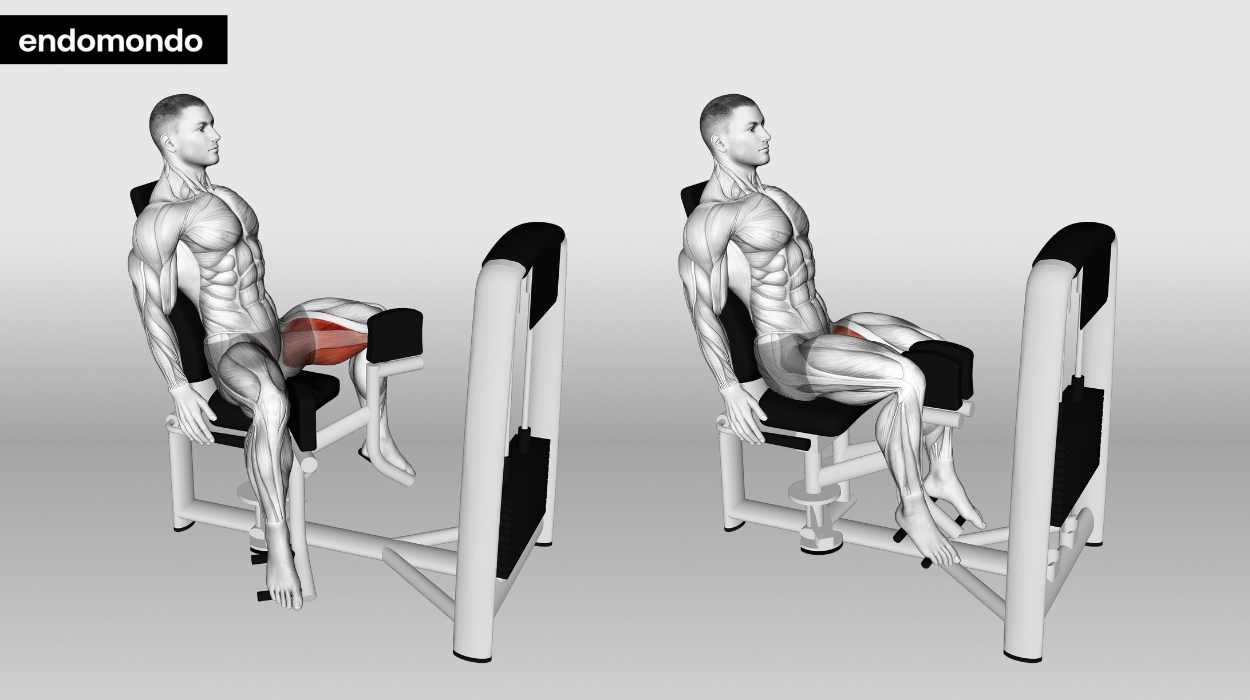
How to do:
- Sit on the device, ensuring your outer knees make contact with the knee padding.
- Choose an appropriate weight; as you sit, the machine’s dual pads should support your outer thighs.
- Hold the machine’s handles and push against the knee padding until your legs are parallel to each other.
- Maintain this posture for a few seconds before slowly returning to the starting position.
Tips:
- Adjust the machine so that the pads are snug against your outer thighs and your feet are flat on the floor.
- Engage your core and use your abductor muscles to push the pads apart, avoiding leaning forward or using momentum.
- Control the range of motion as you return to the starting position, maintaining tension in your abductor muscles throughout the exercise.
Optimal Sets and Reps: Perform three sets of 12-15 repetitions.
Cable Hip Abductions
The cable hip abduction workout also targets your hip abductors. Before performing this exercise, stand sideways, facing a low pulley. Then, connect the cable cuff to a distant ankle. After, move away from the stack and hold the ballet bar.
Next, stay erect on your near foot, allowing the other to cross in front. Then perform the exercise by moving your leg to the low pulley’s opposite side. Return the leg and repeat the step. Afterward, you can change your direction and perform the exercise with your left leg for another ten reps.
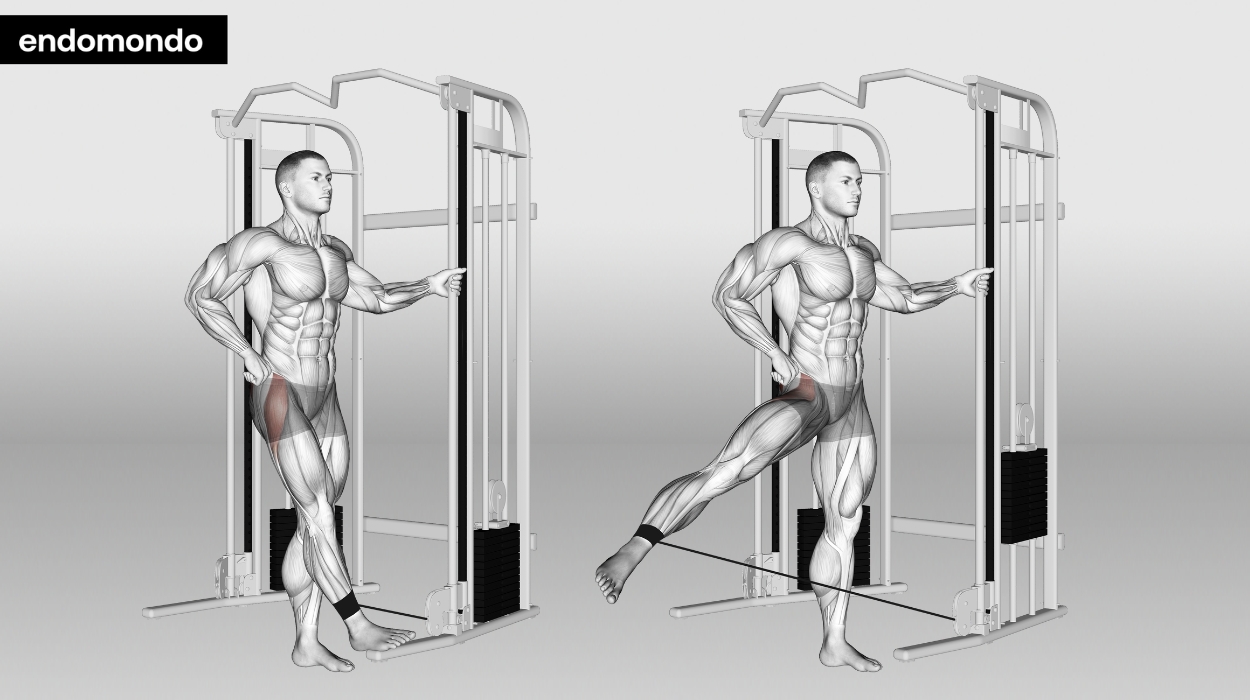
How to do:
- Stand sideways next to a low pulley, facing it.
- Attach the cable cuff to the ankle furthest from the pulley.
- Step away from the weight stack and hold onto a ballet bar for support.
- Stand upright on the leg closest to the machine, allowing your cuffed leg to cross in front.
- Perform the exercise by moving your cuffed leg to the side opposite the low pulley.
- Return the leg to the starting position and repeat the movement.
- After completing the set, switch your orientation and repeat the exercise with your opposite leg for another ten repetitions.
Tips:
- Ensure the cable is attached to your ankle and stand with your side to the pulley, using a stable object or the machine for balance.
- Keep your standing leg slightly bent and move the cuffed leg away from your body in a smooth, controlled motion, engaging your hip abductors.
- Avoid rotating your hips or upper body; the movement should be isolated to your hip joint.
Optimal Sets and Reps: Perform three sets of 10-12 repetitions for each leg.
Barbell Hip Thrusts
This exercise[1] helps to improve the muscular conditioning of your spinal erectors, knee extensors, and hip extensors, and it is a must in your weekly routine! It is also an essential move for building your gluteus Maximus.
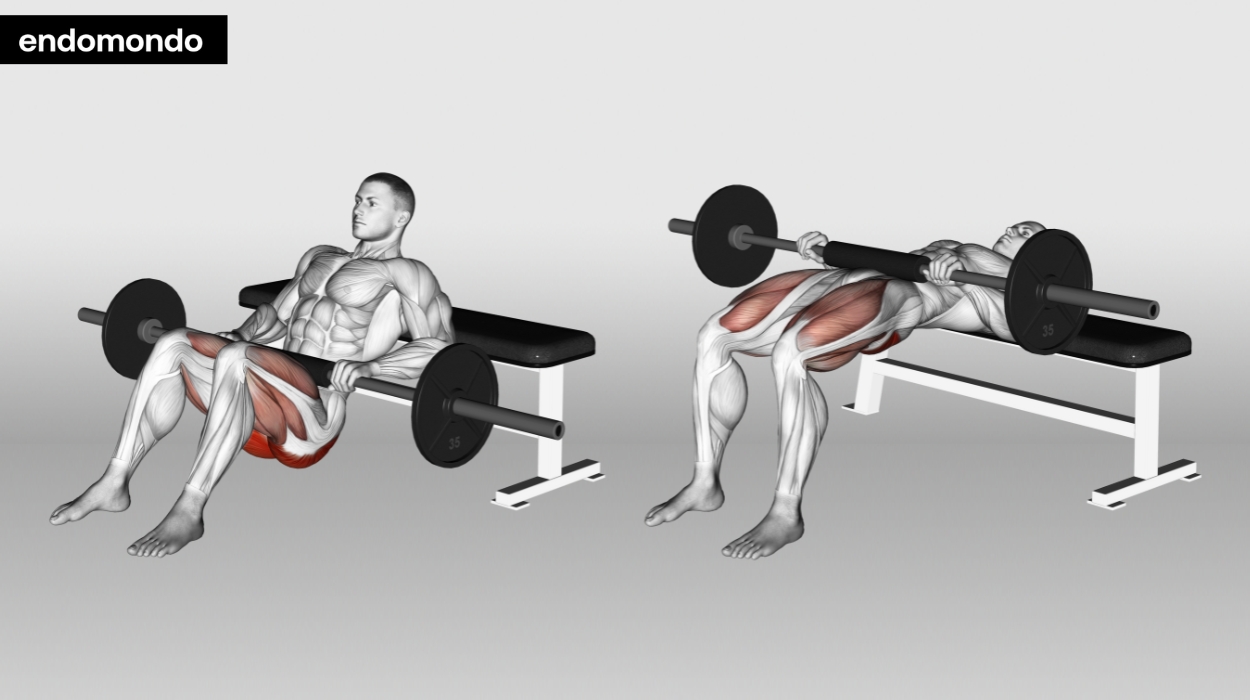
How to do:
- Sit on the floor and lean against a bench, placing a loaded barbell across your hips.
- Bend your knees and plant your feet flat on the floor, keeping your chin tucked into your chest.
- Take a deep breath and push through your heels to thrust your hips and the barbell upwards.
- Once your thighs are parallel to the floor, hold this position for three seconds.
- Slowly lower your hips back to the ground, tapping the plates momentarily before repeating.
- Perform a total of ten repetitions, pausing for three seconds at the top of each movement.
Tips:
- Position the barbell over the hips, and use padding for comfort.
- Drive through heels, and squeeze glutes at the top.
- Keep chin tucked, and spine neutral throughout.
Optimal Sets and Reps: Perform three to four sets of eight to 12 repetitions each.
Cable Kickbacks
This workout strengthens your gluteals (glutes) and hamstrings. For this workout, you should use a cable machine with a low cable pulley at the gym and an ankle cuff attachment or an ankle strap. Then, face the pulley and move backward for resistance. You should use your other leg for support.
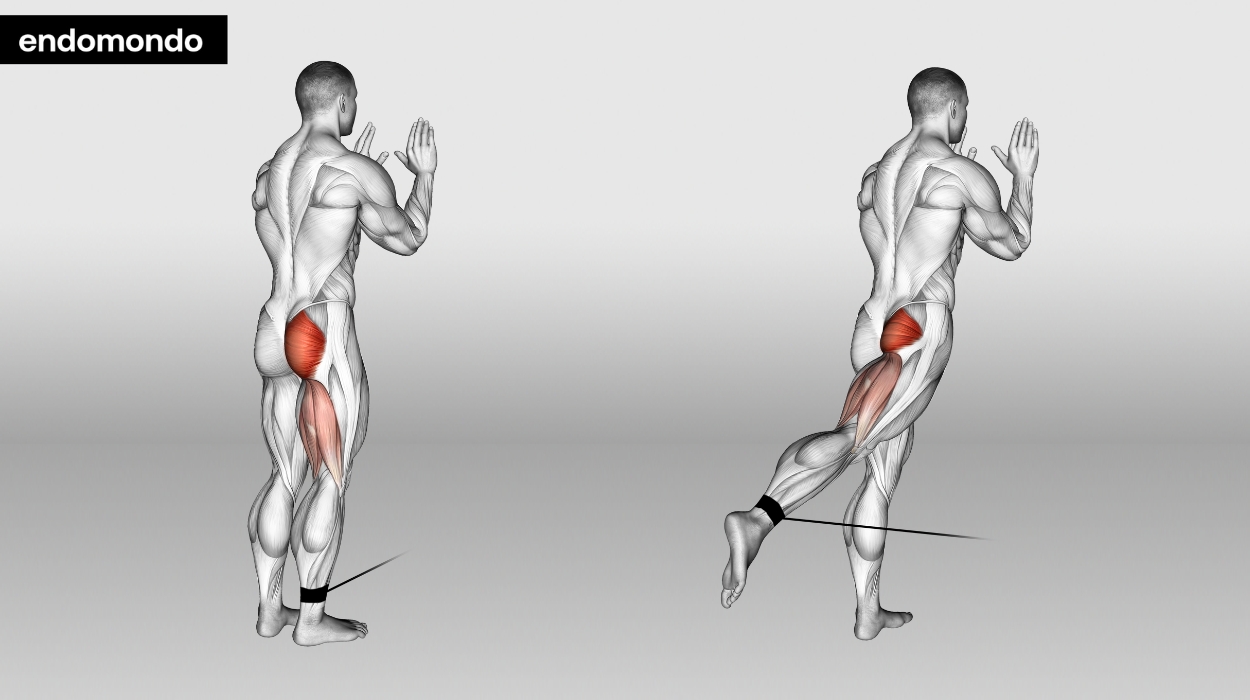
How to do:
- Face the pulley and step backward to create resistance, using your other leg for support.
- Slightly bend your knees and engage your abdominal muscles.
- Slowly kick your leg back until your hip extends and your glutes contract.
- Squeeze your glutes for three to five seconds, then return to the starting position.
Tips:
- Keep your supporting leg slightly bent and your spine neutral to avoid back strain.
- Engage your core throughout the movement for stability and better muscle activation.
- Focus on a smooth, controlled motion, avoiding swinging the leg or using momentum.
Optimal Sets and Reps: Perform three sets of 10-12 repetitions per leg.
Bulgarian Split Squats
This exercise targets your glutes, quadriceps (quads), and hamstrings. To perform it, look for a bench or step you can rest on at knee height. Then observe a forward lunge posture, keeping your core braced and torso upright with one foot resting on the bench behind you.
Now, lower your body until your front thigh is horizontal. Again, make sure you always align your knee with your foot. Then drive up via your front heel to the starting position and repeat with your other leg.
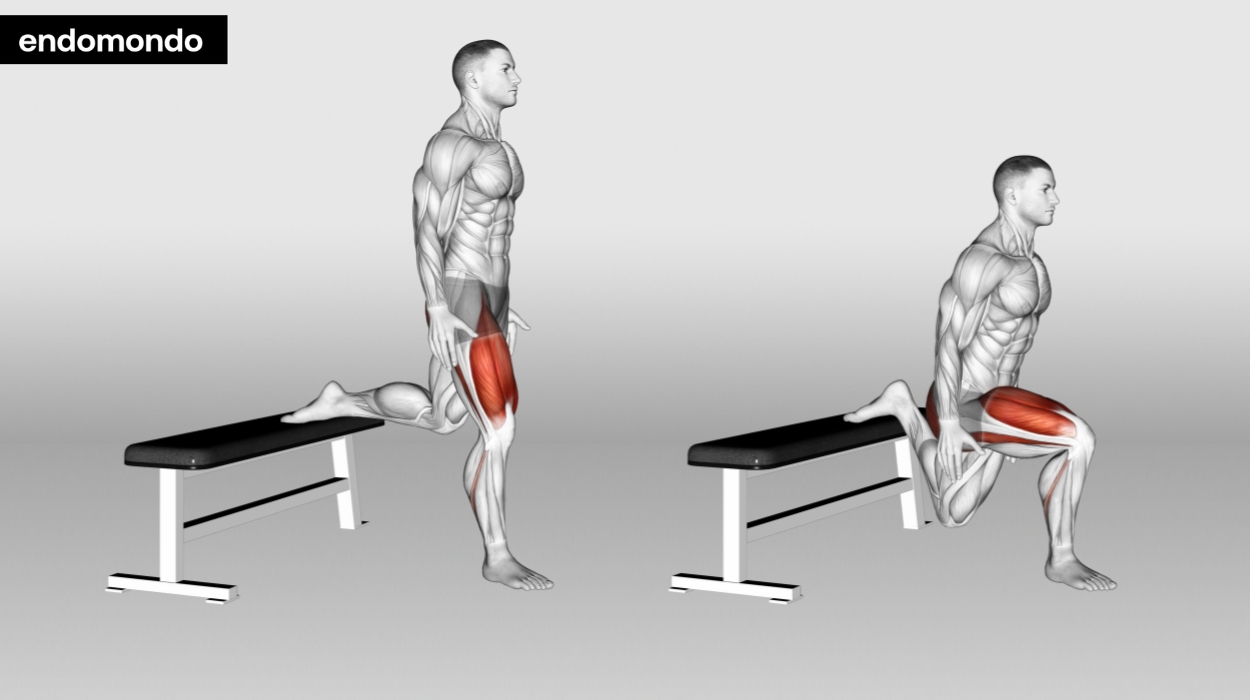
How to do:
- Find a bench or step at knee height to rest one foot on.
- Assume a forward lunge position with core braced, torso upright, and one foot on the bench.
- Lower your body until your front thigh is horizontal, aligning your knee with your foot.
- Drive up through your front heel to return to the starting position.
- Repeat the exercise with the other leg.
Tips:
- Ensure your front foot is far enough forward to keep your knee directly above your ankle when squatting.
- Keep your torso upright and core engaged to maintain balance and proper form.
- Descend slowly and control your movement to avoid putting undue stress on your knee joints.
Optimal Sets and Reps: Perform three sets of eight to 12 repetitions per leg.
Curtsy Lunges
Curtsy lunges are a lower-body exercise where one leg crosses behind the other, mimicking a curtsy motion. This variation targets the glutes, thighs, and hips, enhancing stability and coordination. It’s a dynamic move that adds a lateral element, diversifying traditional lower-body routines.
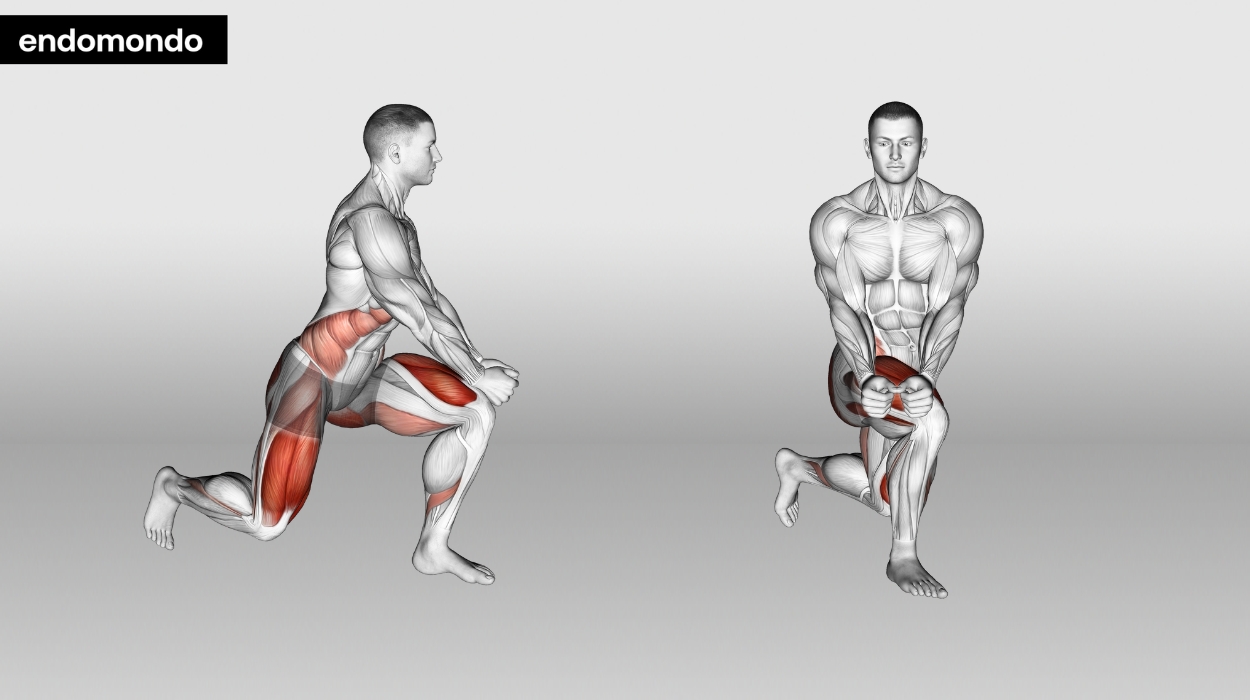
How to do:
- Curtsy lunges target your quadriceps and glutes.
- Stand with both legs straight, feet shoulder-width apart.
- Move your right foot back and across, touching the toe in line with your left foot’s exterior.
- Lower your body until your front thigh is parallel to the ground.
- Carefully push back up to return to the starting position.
- Perform ten repetitions, then switch to the other side.
Tips:
- Keep your chest up and core engaged to maintain balance and ensure proper alignment.
- As you lunge, step your foot diagonally behind you, keeping the bend in your front knee directly above the ankle.
- Avoid leaning forward; lower straight down to keep the focus on your glutes and legs.
Optimal Sets and Reps: Perform three sets of 10-12 repetitions on each leg.
Sumo Squats
The sumo squat works on your glutes and inner thighs as a variation of regular squats. This position targets the inner thighs, glutes, and quads more intensely, emphasizing hip and thigh strength. They are effective for improving lower body strength and flexibility and enhancing overall leg muscle engagement.
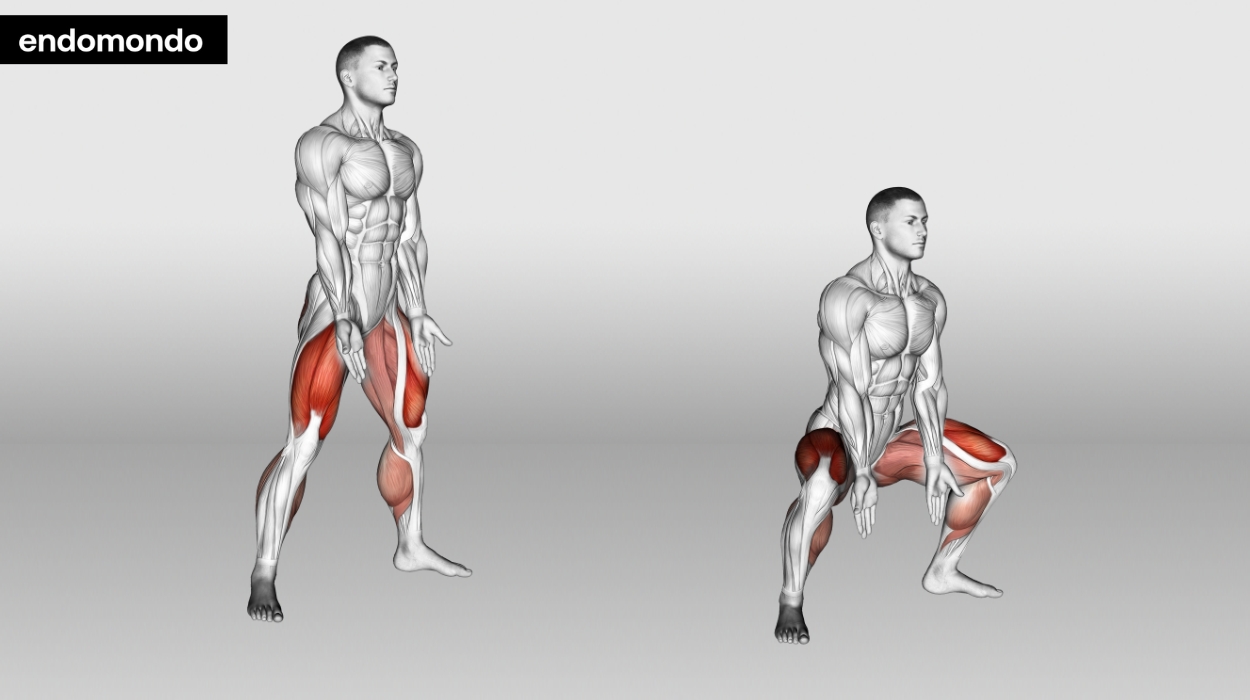
How to do:
- Stand with feet wide, toes pointing at a 45-degree angle.
- Lower into a squat until your thighs are parallel to the ground.
- Drive through your heels to stand up.
Tips:
- Start with your feet wider than shoulder-width apart and toes pointing outwards to effectively engage your inner thighs and glutes.
- Keep your back straight and chest up as you lower down, ensuring your knees track over your toes.
- Push through your heels to rise, focusing on squeezing your glutes at the top of the movement.
Optimal Sets and Reps: Perform three to four sets of 10-15 repetitions.
Fire Hydrants
Fire hydrants are a bodyweight exercise targeting the glutes and hip abductors. Performed on all fours, one leg is raised to the side, resembling a dog at a fire hydrant. This exercise enhances hip mobility, strengthens the glutes, and improves core stability, making it popular in lower-body workouts.
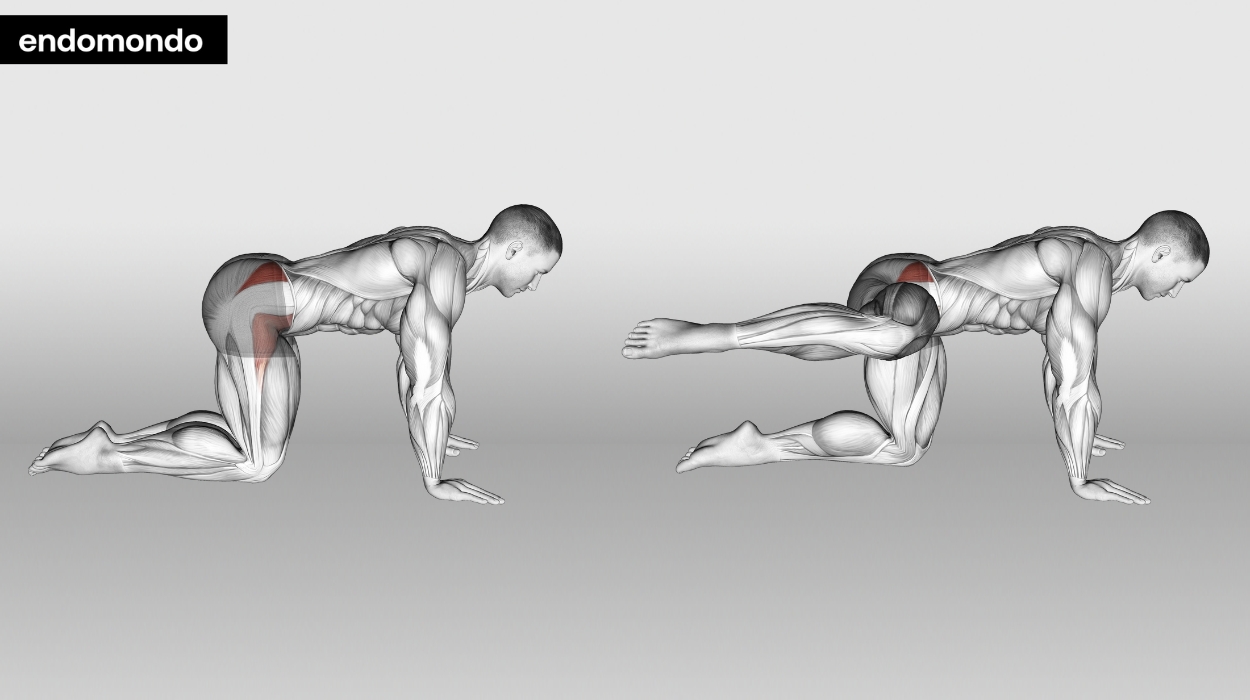
How to do:
- Start on your hands and knees with a neutral spine.
- Brace your core and ensure your hips don’t sag.
- Bend one knee at 90 degrees, then raise that leg up and to the side until it reaches hip height.
- Return to the starting position and repeat with the opposite leg.
Tips:
- Keep your wrists directly under your shoulders and knees under your hips for stability.
- Move your leg using your glute muscles, not momentum, to maximize effectiveness.
- Keep your hips square to the ground to prevent rotating your lower back.
Optimal Sets and Reps: Perform two or three sets of 12-15 repetitions per leg.
Do Your Hips Get Wider When You Gain Weight?
In contrast to the introductory section of this piece, another research[2] shows that the hip width of men and women continues to expand until 80 years of age. So, what happens is just hip bone expansion, increasing hip size, and waist-to-hip ratio. This is something to keep in mind while you are trying to gain weight in your hips. Genetics and age play a big factor in the size of your hips naturally, so be kind to yourself throughout the process of adding weight in that area.
To gain weight in your hips and become more shapely, you want to focus on strengthening your abdominal muscles, glute muscles, and upper thighs to sculpt that hourglass figure and increase muscle mass.
Well, weight gain boils down to two things – diet and exercise. First, focus on increasing your calorie intake since it will avert weight loss, facilitating body fat deposition around your hips. Next, adopt strength training exercises to build muscle mass in your hips. But which exercises exactly would help build hip muscles and gain weight in hips and thighs?
What Muscles Make You Get Bigger Hips?
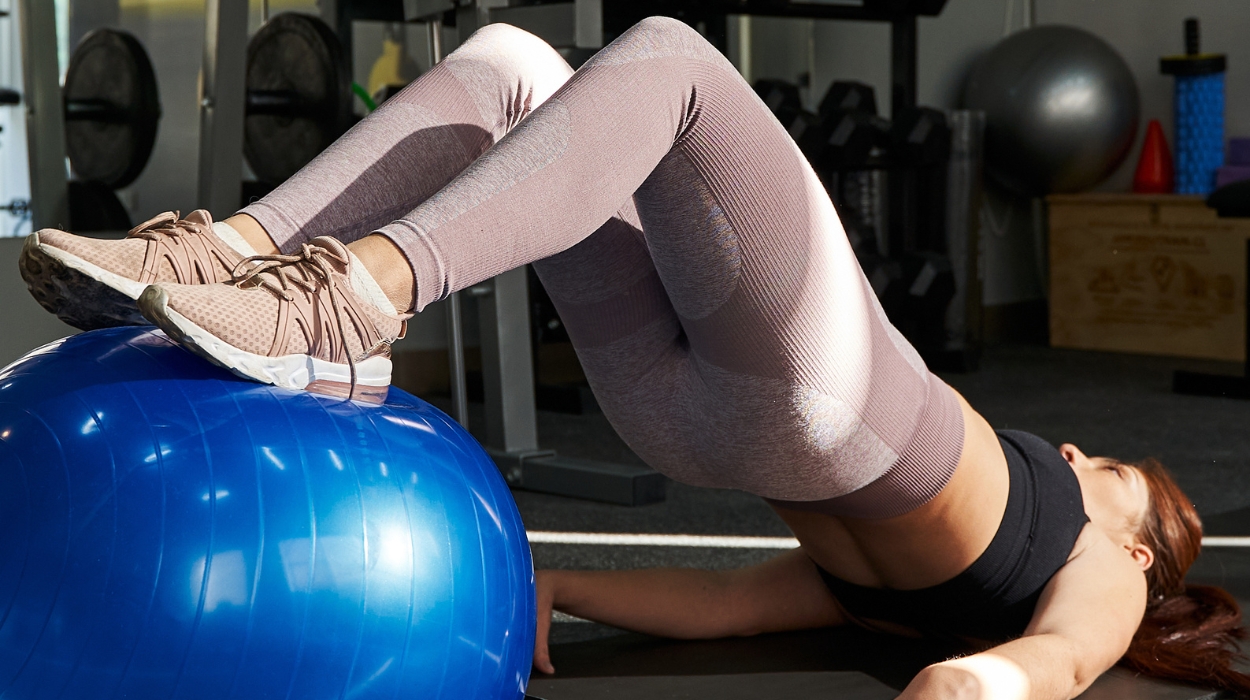
How to get bigger hips? In general, if you desire weight gain in a particular body shape organ, you must target the muscles that comprise that organ. Hence, you must work on your hip muscles to develop wide hips.
They include the gluteus medius, gluteus maximus, and tensor fascia latae. Let us examine each more closely to get an idea of how to get wider hips, as a classic exercise routine may not do the trick!
One of the three muscles of the gluteal region is the gluteus medius. The gluteus medius is positioned between the gluteus minimus and gluteus maximus on the posterior hip. So, what is the purpose of the gluteus medius?
First, the gluteus medius is the fundamental hip abductor. In other words, its primary function is to move your leg away from your body’s midline. In addition, the anterior section of the gluteus medius aids hip flexion; it also rotates your hips medially, turning them inwards.
As the name gluteus maximus[3] implies, it is the largest of the three gluteal muscles. It is a thick and quadrangular-shaped muscle that helps to keep your body’s posture erect.
The gluteus maximus joins forces with other important muscles to extend your hip and is also responsible for rotating your hip externally.
The tensor fascia latae (TFL) is a muscle that runs along the side of your hips and works with the gluteal muscles to facilitate various hip movements – hip abduction, flexion, and internal rotation.
Foods That Increase Hips Size
To answer the question of how to gain weight in my hips, you need to look at your diet. Your diet is a key factor in weight gain and muscle growth to get wider hips. Therefore, you should prioritize protein since it fuels the muscles, increases your caloric intake, and fuels wider hips.
Meanwhile, almonds, pumpkin seeds, flax seeds, nuts, legumes, beans, and peas will also help add to your total calorie intake. Poultry such as chicken, turkey, and pork are excellent foods that can widen your hips. Also, you can consume red meat such as lamb, goat, veal, mutton, beef, and pork. If you can’t get enough protein from food, consider protein supplements.
In addition, other examples of hip-widening foods include eggs, milk, Greek yogurt, fish, shellfish, quinoa, protein shakes, broccoli, cauliflower, and cottage cheese.
Summary
Have you been wondering how to gain weight in your hips? Hopefully, now you understand better how to build muscle around your hips; exercises for wider hips, you need dedication and consistency to a plan. It does not happen by chance. So, you should adopt a weight training workout and diet plan you can maintain conveniently!
+ 3 sources
Health Canal avoids using tertiary references. We have strict sourcing guidelines and rely on peer-reviewed studies, academic researches from medical associations and institutions. To ensure the accuracy of articles in Health Canal, you can read more about the editorial process here
- Snarr, R. and Eckert, R. (2014). Barbell Hip Thrust. [online] ResearchGate. Available at: https://www.researchgate.net/publication/268513513_Barbell_Hip_Thrust
- Berger, A.A., May, R., Renner, J.B., Viradia, N. and Dahners, L.E. (2011). Surprising evidence of pelvic growth (widening) after skeletal maturity. Journal of Orthopaedic Research, [online] 29(11), pp.1719–1723. doi:10.1002/jor.21469.
- Adel Elzanie and Borger, J. (2022). Anatomy, Bony Pelvis and Lower Limb, Gluteus Maximus Muscle. [online] Nih.gov. Available at: https://www.ncbi.nlm.nih.gov/books/NBK538193/



